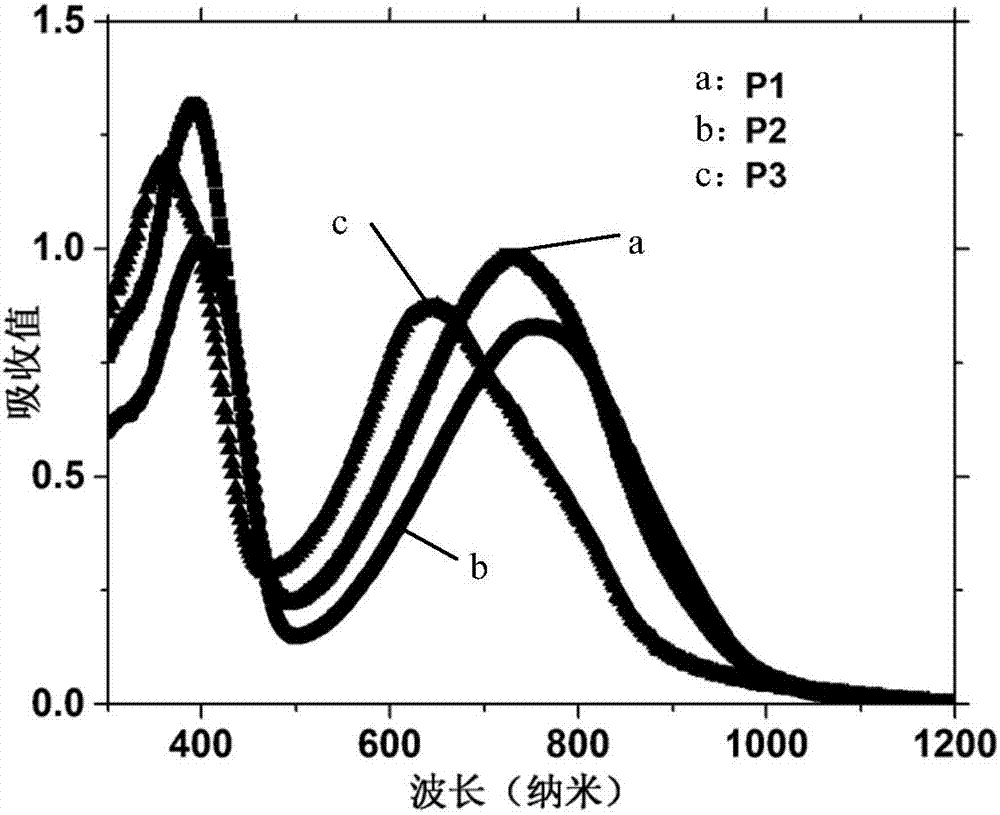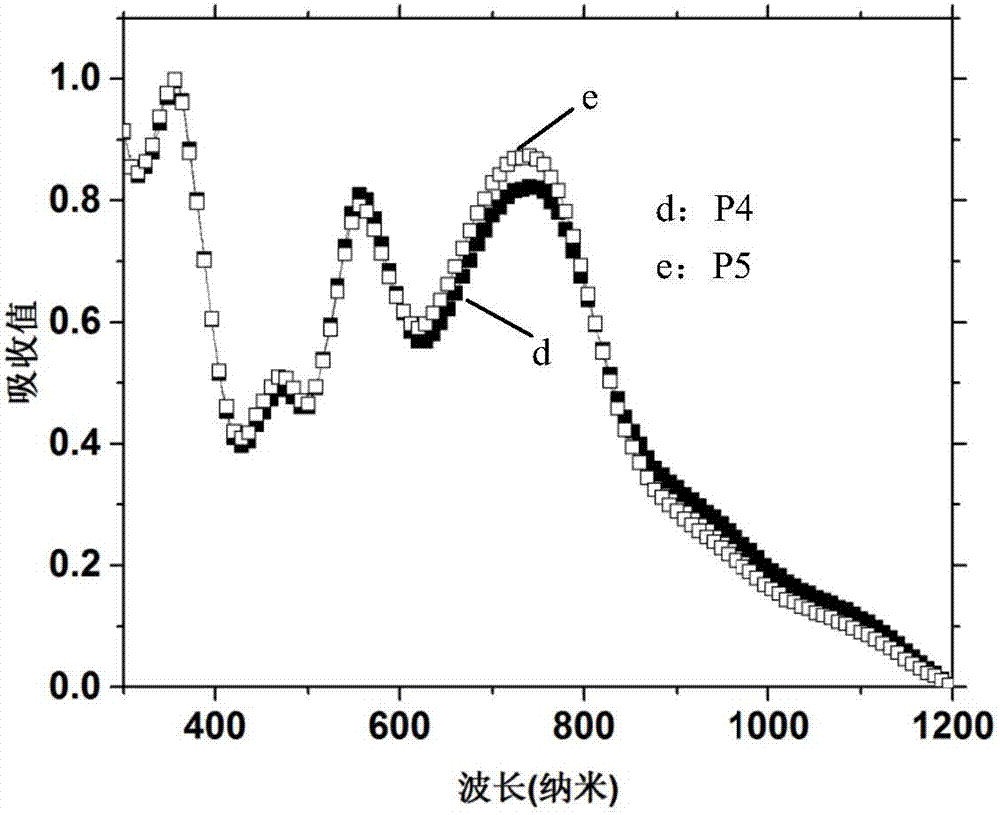N-type conjugated polymer containing quinoid structure and application of N-type conjugated polymer to organic photoelectric device
A conjugated polymer, n-type technology, which is used in electric solid devices, photovoltaic power generation, electrical components, etc., can solve the problems of insufficient absorption spectrum and low absorption coefficient, so as to improve photocurrent and battery device efficiency and improve absorption. coefficient, the effect of broadening the absorption spectrum
- Summary
- Abstract
- Description
- Claims
- Application Information
AI Technical Summary
Problems solved by technology
Method used
Image
Examples
Embodiment 1
[0032] A representative synthetic route is as follows:
[0033]
[0034]
[0035] (1) Monomers M1, M4, and M7 were synthesized according to the method disclosed in the literature [Journal of Materials Chemistry C, 2015, 3(34):8904-8915.].
[0036] (2) Monomers M2, M5, and M8 were synthesized according to the method disclosed in the literature [Polymer Chemistry, 2013, 4(20):5275-5282.].
[0037] (3) Monomers M6, M9, M12, and M13 were synthesized according to the method disclosed in the literature [J.AM.CHEM.SOC.2009, 131, 7792-7799].
[0038] (4) Synthesis of polymers P1, P2, P3:
[0039] Add monomers M1 (0.16mmol) and monomers M2 (0.04mmol) and M3 (0.2mmol) into a 25mL two-necked flask, pass through nitrogen protection, and add 8mL of toluene. Add 5mg Pd(PPh 3 ) 4 , After reacting at 95°C for 12h, the polymer was precipitated with methanol and washed three times. A dark polymer P1 was obtained with a yield of 90.7%.
[0040] Add monomers M4 (0.15mmol) and monomers...
Embodiment 2
[0047] Using the conjugated polymers P1, P2, and P3 synthesized in Example 1 (the AB components in the structure are the same) as electron acceptors in organic solar cells (ITO cathode / cathode interface layer / active layer / anode-machine interface layer / anode) in the application.
[0048] Pre-cut the ITO conductive glass with a square resistance of 20 ohms / cm2 into 15mm×15mm square pieces. Use acetone, special detergent for micron-sized semiconductors, deionized water, and isopropanol to clean ultrasonically in sequence, blow nitrogen whistle, and place in a constant temperature oven for later use. Spin-coat a layer of 5nm thick PFN-Br on ITO, then spin-coat active layer materials PTB7-Th / P1, PTB7-Th / P2, PTB7-Th / P3 with a thickness of 110nm, and finally evaporate MoO 3 and Al electrodes. All preparations were carried out in a glove box under a nitrogen atmosphere. The current-voltage curves of the fabricated flip-chip devices are as follows: Figure 4 The relevant data are l...
Embodiment 3
[0050] Using the conjugated polymers P1, P2, and P3 synthesized in Example 1 (with the same AB components in the structure) as electron acceptors in organic solar cells (ITO anode / anode interface layer / active layer / cathode interface layer / cathode) in the application.
[0051] Pre-cut the ITO conductive glass with a square resistance of 20 ohms / cm2 into 15mm×15mm square pieces. Use acetone, special detergent for micron-sized semiconductors, deionized water, and isopropanol to clean ultrasonically in sequence, blow nitrogen whistle, and place in a constant temperature oven for later use. Spin-coat a layer of PEDOT:PSS with a thickness of 20 nm on the ITO, and then spin-coat the active layer materials PTB7-Th / P1, PTB7-Th / P2, and PTB7-Th / P3 with a thickness of 100 nm. Then spin-coat a layer of PFN-Br with a thickness of 5nm, and finally evaporate Al electrodes. All preparations were carried out in a glove box under a nitrogen atmosphere. The current-voltage curves of the prepar...
PUM
 Login to View More
Login to View More Abstract
Description
Claims
Application Information
 Login to View More
Login to View More - R&D
- Intellectual Property
- Life Sciences
- Materials
- Tech Scout
- Unparalleled Data Quality
- Higher Quality Content
- 60% Fewer Hallucinations
Browse by: Latest US Patents, China's latest patents, Technical Efficacy Thesaurus, Application Domain, Technology Topic, Popular Technical Reports.
© 2025 PatSnap. All rights reserved.Legal|Privacy policy|Modern Slavery Act Transparency Statement|Sitemap|About US| Contact US: help@patsnap.com



